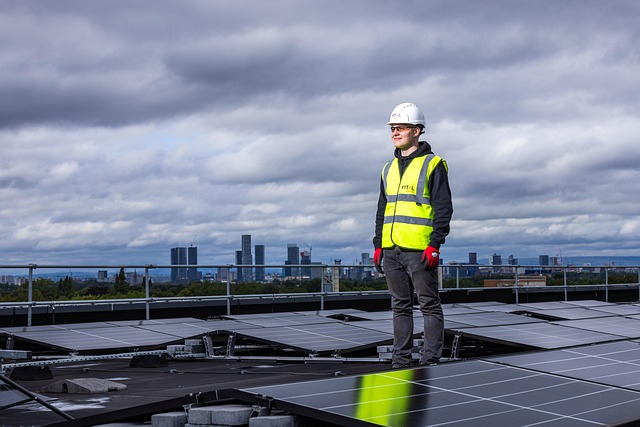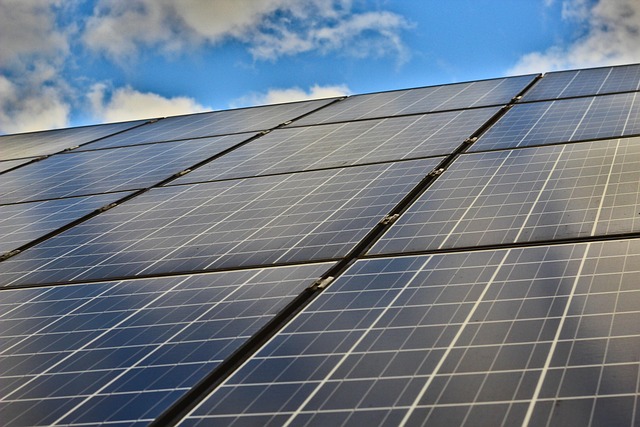The Future of Green Energy: Innovations Shaping Our World
In the wake of climate change and environmental degradation, the world is witnessing a paradigm shift towards sustainable energy solutions. Green energy, which encompasses renewable sources like solar, wind, hydro, and geothermal power, is at the forefront of this transition. With innovations emerging at a rapid pace, it is essential to explore how these advancements are reshaping our world and the potential they hold for the future.
Understanding Green Energy
Green energy refers to renewable energy sources that are naturally replenished and have minimal environmental impact. Unlike fossil fuels, which are finite resources responsible for significant greenhouse gas emissions, green energy sources promote cleaner air and reduced carbon footprints. The main forms of green energy include:
- Solar Energy: Harnessed through the use of photovoltaic cells or solar thermal systems, solar energy is one of the most abundant renewable resources.
- Wind Energy: Generated by wind turbines, wind energy is becoming increasingly viable through technological advancements that maximize efficiency.
- Hydropower: Utilizing the gravitational force of falling or flowing water, hydropower has been a long-standing contributor to the renewable energy mix.
- Geothermal Energy: This energy is derived from the Earth’s internal heat and can be used for heating, cooling, and electricity generation.
- Biomass: Organic materials, including agricultural residues and waste, can be converted into energy, providing a dual benefit of waste management and energy production.
Current Innovations in Green Energy
As technological advancements continue to unfold, various innovations are driving the green energy sector forward, making it more efficient, accessible, and reliable. Here are some key innovations currently shaping the landscape:
1. Advanced Solar Technologies
The solar energy sector has seen remarkable innovations in recent years. Among the most significant advancements are:
- Bifacial Solar Panels: These panels absorb sunlight from both sides, increasing energy generation by up to 30% compared to traditional monofacial panels.
- Perovskite Solar Cells: Not only are these cells cheaper to produce, but they also promise higher efficiency rates and greater flexibility in applications.
- Solar Tracking Systems: These systems optimize the angle of solar panels in relation to the sun’s path, significantly boosting energy output.
2. Wind Energy Innovations
Wind energy technology is also evolving, leading to enhanced efficiency and broader application. Key innovations include:
- Floating Wind Turbines: These offshore systems utilize floating platforms to harness wind in deeper waters, where wind speeds are higher and more consistent.
- Vertical Axis Wind Turbines (VAWT): Unlike traditional horizontal-axis turbines, VAWTs can capture wind from any direction, making them suitable for urban environments.
- Large Turbine Blades: Recent designs have led to longer and more efficient turbine blades, which capture more wind energy and decrease the cost per megawatt.
3. Energy Storage Solutions
Effective energy storage is crucial for maximizing the potential of renewable energy. Innovations in this space include:
- Advanced Lithium-Ion Batteries: Continuous improvements in battery technology are leading to longer-lasting and more efficient energy storage options.
- Flow Batteries: These batteries offer the advantage of scalability and longer discharge times, making them suitable for large-scale applications.
- Hydrogen Storage Technologies: Utilizing excess renewable energy to produce hydrogen can provide a versatile storage method and serve as a clean fuel alternative.
Emerging Technologies on the Horizon
In addition to current innovations, several emerging technologies have the potential to revolutionize the green energy landscape:
1. Artificial Intelligence (AI) and Machine Learning
AI and machine learning are poised to transform energy management by optimizing power generation, consumption, and storage. Predictive analytics can enhance grid stability and efficiency by forecasting energy demand and supply fluctuations, enabling better integration of renewable sources.
2. Carbon Capture and Storage (CCS)
CCS technology captures carbon emissions at their source and stores them underground, reducing their impact on the atmosphere. As the need to mitigate climate change escalates, the integration of CCS with existing energy systems could play a pivotal role in achieving climate targets.
3. Smart Grids
Smart grid technology facilitates two-way communication between energy providers and consumers, optimizing energy distribution and consumption. By integrating renewable energy sources effectively, smart grids can contribute to a more resilient and efficient energy network.
Impact on Society and the Economy
The shift towards green energy is not merely an environmental necessity; it represents a significant economic opportunity. As renewable energy technologies become more widespread, they create jobs in manufacturing, installation, and maintenance. The transition also encourages innovation in related sectors, such as energy efficiency and electric vehicles, driving further economic growth.
Moreover, green energy can lead to energy independence, reducing reliance on imported fossil fuels and enhancing national security. A diversified energy portfolio also contributes to price stability, lowering vulnerabilities to oil and gas market fluctuations.
Challenges Ahead
Despite the positive trajectory of green energy innovations, several challenges remain:
1. Infrastructure Limitations
The existing energy infrastructure in many countries is geared towards fossil fuels, posing challenges for integrating renewable sources. Upgrading and modernizing this infrastructure requires substantial investment and coordination among various stakeholders.
2. Policy and Regulation
Inconsistent policies and regulatory frameworks may hinder the adoption of green energy technologies. Governments must enact supportive legislation that rewards innovation, facilitates investment, and aligns incentives for the transition to green energy.
3. Public Awareness and Acceptance
Public perception plays a pivotal role in the adoption of new technologies. Misconceptions about renewable energy and resistance to change can impede progress. Increasing public awareness through education and community engagement is essential for garnering widespread support.
The Road Ahead
Looking towards the future, the trajectory of green energy innovations appears promising. As technology continues to evolve and the global community unites to confront climate change, the potential for a sustainable energy future grows stronger. Widespread collaboration between governments, businesses, and individuals will be crucial in shaping an inclusive transition.
Investments in research and development, as well as education and outreach, will provide the necessary foundation for advancing green energy solutions. Embracing a holistic approach that integrates socioeconomic factors with environmental goals can foster a more resilient and sustainable world. The time to act is now, and the path forward lies in harnessing the power of innovation in green energy.
This is a pivotal moment in history as we stand on the brink of a cleaner, more sustainable energy future. By embracing innovations in green energy, we can not only address the pressing challenges of climate change but also unlock new avenues for economic development and social equity. Together, we have the opportunity to build a world powered by clean, renewable energy sources that benefit current and future generations.



